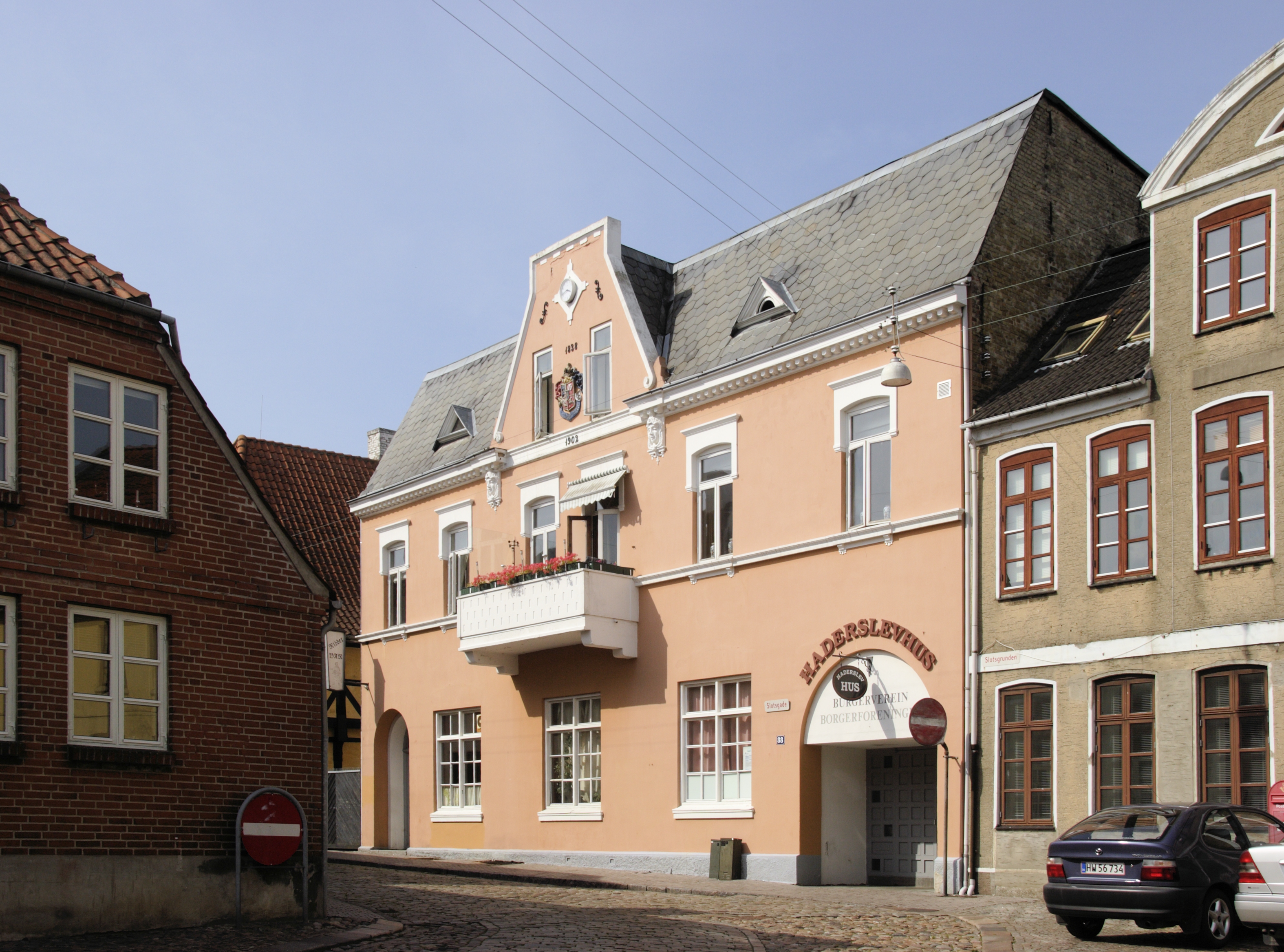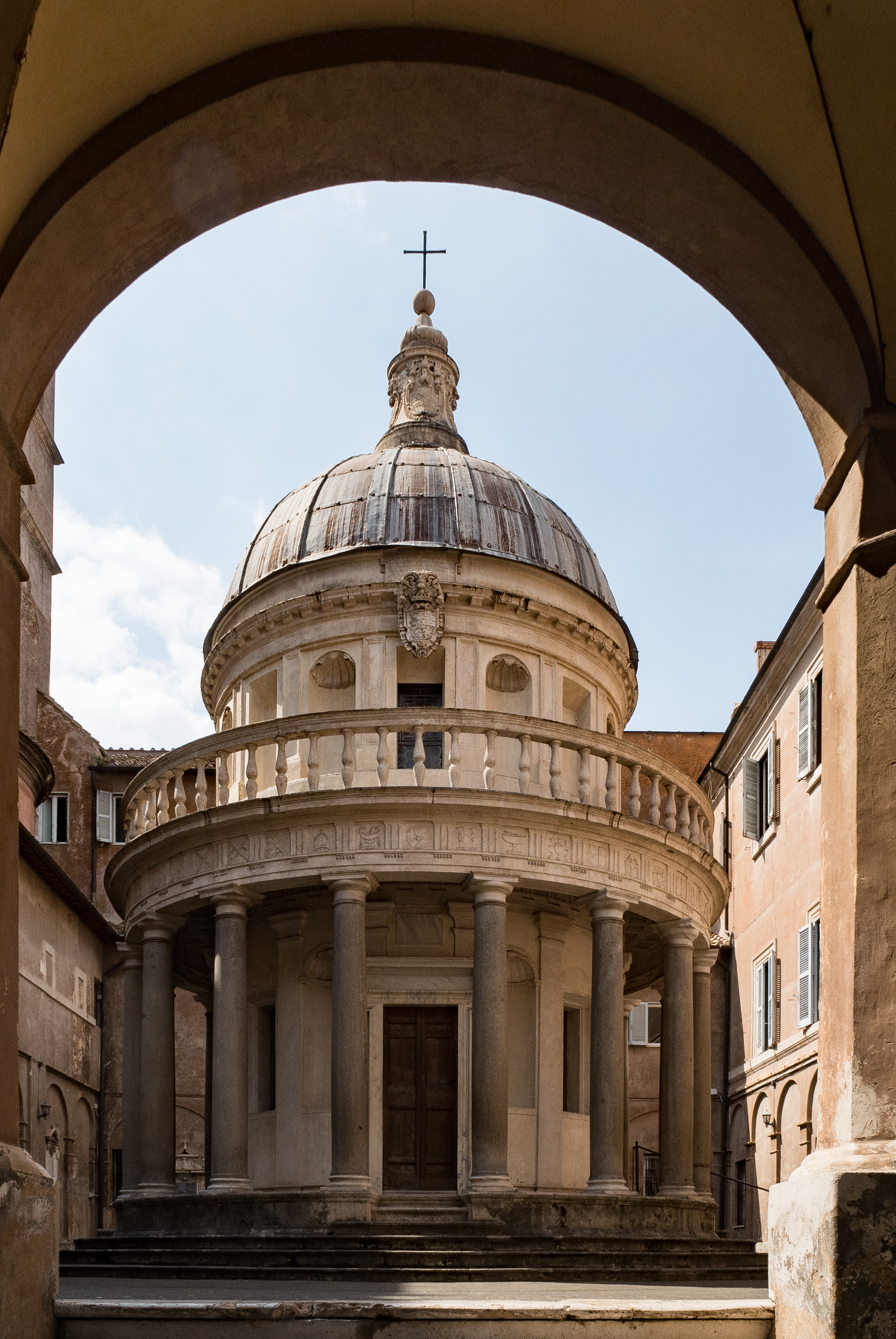|
Hercules Von Oberberg
Hercules von Oberberg (1517–1602) was a Dutch-Danish Renaissance architect. He was mainly active in the Duchy of Schleswig. Biography In his early years Hercules von Oberberg worked for Johann of Brandenburg-Küstrin but on 17 July 1557 he became Royal Building Master, succeeding Martin Bussert, but he only stayed in the position for two years. During that time he worked on Copenhagen Castle and Koldinghus (minor renovations), Sønderborg Castle (planning and commenced rebuilding), the Fortifications of Copenhagen and Krogen (the bastioned fortifications). On 29 August 1559 he was employed by Duke Hans the Elder in Haderslev where he stayed until his death. In 1559-60 he directed the extension of Hansborg with two new wings and a tower. During Duke Hans' last years he was also responsible for the reconstruction and fortification of Tønderhus. In 1591 he worked on Gottorf Castle, where he is credited for the gables of the northern wing. In 1598 Christian IV charged von Obe ... [...More Info...] [...Related Items...] OR: [Wikipedia] [Google] [Baidu] |
Hansborg
Haderslevhus (or Hansborg) is the name of a castle that once stood in the Danish city of Haderslev, until destroyed by a fire in 1644. History Like most of the medieval cities of trade, Haderslev had a royal castle, which was called Haderslevhus. The suffix "hus" (meaning house) was commonly used for castles in medieval Denmark ( Koldinghus, Tønderhus, Ålborghus, Riberhus etc.). The castle was first mentioned in sources dating back to 1326, but was most likely built in the second half of the 13th century, like most Danish city castles. The castle was the home of the governor of the borough (and later the county), who took care of the king's (or in Southern Jutland, the duke's) possessions, in and around the city. In the city castle, the taxes, duties, and fines were paid here. Haderslevhus was located in the eastern part of the city, which was surrounded by a moat at the time. In this fortification lived the future Danish king, Christian III of Denmark, when he imposed the ... [...More Info...] [...Related Items...] OR: [Wikipedia] [Google] [Baidu] |
Renaissance Architects
The Renaissance ( , ) , from , with the same meanings. is a period in European history marking the transition from the Middle Ages to modernity and covering the 15th and 16th centuries, characterized by an effort to revive and surpass ideas and achievements of classical antiquity. It occurred after the Crisis of the Late Middle Ages and was associated with great social change. In addition to the standard periodization, proponents of a "long Renaissance" may put its beginning in the 14th century and its end in the 17th century. The traditional view focuses more on the early modern aspects of the Renaissance and argues that it was a break from the past, but many historians today focus more on its medieval aspects and argue that it was an extension of the Middle Ages. However, the beginnings of the period – the early Renaissance of the 15th century and the Italian Proto-Renaissance from around 1250 or 1300 – overlap considerably with the Late Middle Ages, conventionally da ... [...More Info...] [...Related Items...] OR: [Wikipedia] [Google] [Baidu] |
Dutch Architects
Following is a list of Dutch architects in alphabetical order by birth century. Born in the 15th century * Jan Heyns (14??–1516) Born in the 16th century * Bartholomeus van Bassen (c.1590–1652) * Salomon de Bray (1597–1664) * Jacob van Campen (1596–1657) * Lieven de Key (c.1560–1627) * Hendrick de Keyser (1565–1621) * Pieter de Keyser (c.1595–1676) * Thomas de Keyser (c.1596–1667) * Hans Vredeman de Vries (1527–c.1607) Born in the 17th century * Harmen van Bol'es (1689–1764) * Simon Bosboom (1614–1662) * Adriaan Dortsman (1635–1682) * Tielman van Gameren (1632–1706) * Daniël Marot (1661–1752) * Maurits Post (1645–1677) * Pieter Post (1608–1669) * Steven Vennecool (1657–1719) * Justus Vingboons (c.1620–c.1698) * Philips Vingboons (c.1607–1678) Born in the 18th century * Jan Bouman (1706–1776) * Abraham van der Hart (1747–1820) * Jacob Otten Husly (1738–1796) * Leendert Viervant (1752–1801) Born in the 1 ... [...More Info...] [...Related Items...] OR: [Wikipedia] [Google] [Baidu] |
Danish Architects
Danish may refer to: * Something of, from, or related to the country of Denmark People * A national or citizen of Denmark, also called a "Dane," see Demographics of Denmark * Culture of Denmark * Danish people or Danes, people with a Danish ancestral or ethnic identity * A member of the Danes, a Germanic tribe * Danish (name), a male given name and surname Language * Danish language, a North Germanic language used mostly in Denmark and Northern Germany * Danish tongue or Old Norse, the parent language of all North Germanic languages Food * Danish cuisine * Danish pastry, often simply called a "Danish" See also * Dane (other) * * Gdańsk Gdańsk ( , also ; ; csb, Gduńsk;Stefan Ramułt, ''Słownik języka pomorskiego, czyli kaszubskiego'', Kraków 1893, Gdańsk 2003, ISBN 83-87408-64-6. , Johann Georg Theodor Grässe, ''Orbis latinus oder Verzeichniss der lateinischen Benen ... * List of Danes * Languages of Denmark {{disambiguation Language and nati ... [...More Info...] [...Related Items...] OR: [Wikipedia] [Google] [Baidu] |
Christian III Of Denmark
Christian III (12 August 1503 – 1 January 1559) reigned as King of Denmark from 1534 and King of Norway from 1537 until his death in 1559. During his reign, Christian formed close ties between the church and the crown. He established Lutheranism as the state religion within his realms as part of the Protestant Reformation. Childhood Christian was the eldest son of the future king, Frederick I of Denmark, and Anna of Brandenburg. He was born at Gottorf Castle in Schleswig which Frederick I had made as a primary residence. In 1514, when he was just ten years old, Christian's mother died. Four years later, his father remarried to Sophie of Pomerania (1498–1568). In 1523, Frederick I was elected King of Denmark in the place of his nephew, King Christian II of Denmark. The young Prince Christian's first public service after his father became king was gaining the submission of Copenhagen, which stood firm for the fugitive, King Christian II. As stadtholder of ... [...More Info...] [...Related Items...] OR: [Wikipedia] [Google] [Baidu] |
Cornelis Floris De Vriendt
Cornelis Floris or Cornelis (II) Floris De Vriendt (c. 1514 – 20 October 1575) was a Flemish sculptor, architect, draughtsman, medallist and designer of prints and luxury. He operated a large workshop in Antwerp from which he worked on many large construction projects in Flanders, Germany and Denmark.Cornelis Floris (II) at the He was one of the designers of the . He developed a new style, which was informed by Flemish traditions, the 16th century |
Christian IV Of Denmark
Christian IV (12 April 1577 – 28 February 1648) was King of Denmark and Norway and Duke of Holstein and Schleswig from 1588 until his death in 1648. His reign of 59 years, 330 days is the longest of Danish monarchs and Scandinavian monarchies. A member of the House of Oldenburg, Christian began his personal rule of Denmark in 1596 at the age of 19. He is remembered as one of the most popular, ambitious, and proactive Danish kings, having initiated many reforms and projects. Christian IV obtained for his kingdom a level of stability and wealth that was virtually unmatched elsewhere in Europe. He engaged Denmark in numerous wars, most notably the Thirty Years' War (1618–1648), which devastated much of Germany, undermined the Danish economy, and cost Denmark some of its conquered territories. He rebuilt and renamed the Norwegian capital Oslo as ''Christiania'' after himself, a name used until 1925. Early years Birth and family Christian was born at Frederiksborg ... [...More Info...] [...Related Items...] OR: [Wikipedia] [Google] [Baidu] |
Gottorf Castle
Gottorf Castle (german: Schloss Gottorf, da, Gottorp Slot, Low German: ''Gottorp'') is a castle and estate in the city of Schleswig, Schleswig-Holstein, Germany. It is one of the most important secular buildings in Schleswig-Holstein, and has been rebuilt and expanded several times in its over eight hundred years of history, changing from a medieval castle to a Renaissance fortress to a Baroque castle.Dehio: Handbuch der Deutschen Kunstdenkmäler. Hamburg, Schleswig-Holstein, p. 800. (German text) It is the ancestral home of the Holstein-Gottorp branch of the House of Oldenburg, from which emerged in the 18th century, among other things, four Swedish kings and several Russian Emperors. It is situated on an island in the Schlei, about 40 km from the Baltic Sea. History It was first settled as an estate in 1161 as the residence of Bishop Occo of Schleswig when his former residence was destroyed. The Danish Duke of Schleswig acquired it through a purchase in 1268, and in ... [...More Info...] [...Related Items...] OR: [Wikipedia] [Google] [Baidu] |
Haderslev
Haderslev (; german: Hadersleben ) is a Danish town in the Region of Southern Denmark with a population of 22,011 (1 January 2022).BY3: Population 1. January by urban areas, area and population density The Mobile Statbank from It is the main town and the administrative seat of and is situated in the eastern part of Southern Jutland. Haderslev is home of |
Renaissance Architecture
Renaissance architecture is the European architecture of the period between the early 15th and early 16th centuries in different regions, demonstrating a conscious revival and development of certain elements of ancient Greek and Roman thought and material culture. Stylistically, Renaissance architecture followed Gothic architecture and was succeeded by Baroque architecture. Developed first in Florence, with Filippo Brunelleschi as one of its innovators, the Renaissance style quickly spread to other Italian cities. The style was carried to Spain, France, Germany, England, Russia and other parts of Europe at different dates and with varying degrees of impact. Renaissance style places emphasis on symmetry, proportion, geometry and the regularity of parts, as demonstrated in the architecture of classical antiquity and in particular ancient Roman architecture, of which many examples remained. Orderly arrangements of columns, pilasters and lintels, as well as the use of semici ... [...More Info...] [...Related Items...] OR: [Wikipedia] [Google] [Baidu] |


.jpg)


